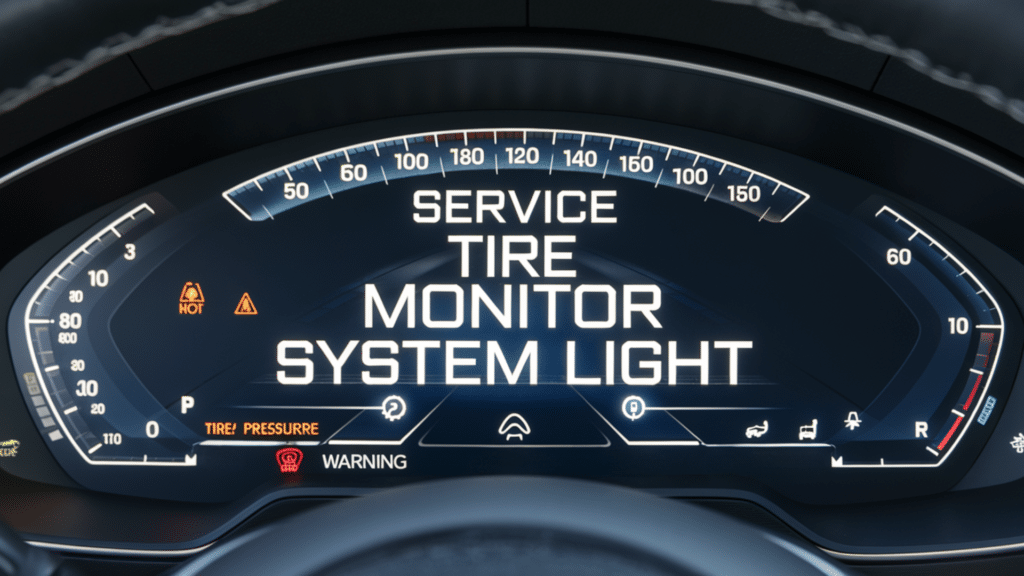The Service Tire Monitor System (STMS) is an essential component in modern vehicles that helps monitor tire pressure.
This system uses sensors in each tire to track air pressure and sends alerts if any of the tires are underinflated.
The primary purpose of the STMS is to ensure your tires are properly inflated, which is crucial for safety, fuel efficiency, and tire longevity. When the system detects a pressure drop, it triggers the service tire monitor light on your dashboard.
Many people are unsure of what the warning light means or how to respond. It’s important to understand that the light typically indicates low tire pressure, but other factors, like sensor issues, can also cause it to illuminate.
Addressing the issue promptly can help prevent further tire damage and improve overall vehicle performance.
What is the Service Tire Monitor System?
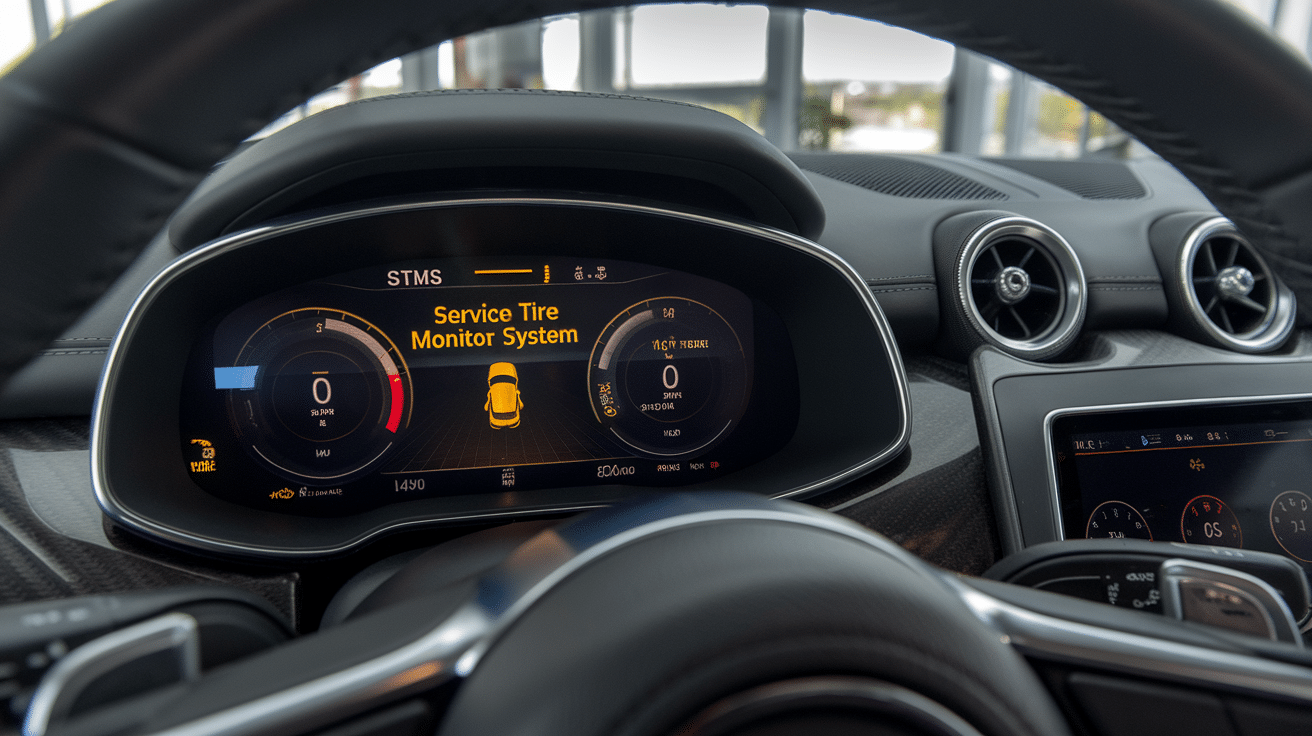
The Service Tire Monitor System (STMS) is a safety feature in many modern vehicles designed to help drivers maintain proper tire pressure.
This system uses sensors that monitor the air pressure inside each tire and alert the driver when the pressure falls below the safe level.
Maintaining proper tire pressure is crucial for ensuring vehicle safety, fuel efficiency, and tire lifespan.
By detecting tire pressure issues early, the STMS helps prevent blowouts, improve handling, and reduce wear on tires.
Explanation of STMS
The STMS constantly checks the air pressure in each tire. It uses tire pressure sensors placed inside each tire to send real-time data to the vehicle’s electronic control unit (ECU).
When the air pressure in one or more tires drops below a certain threshold, the system triggers the dashboard warning light to notify the driver.
Components of STMS
- Tire Pressure Sensors: These sensors are mounted inside each tire and measure the air pressure. They wirelessly send the data to the vehicle’s electronic system, where it can be monitored.
- Electronic Control Unit: The ECU processes the information received from the tire sensors. It compares the pressure readings with the ideal values. If the pressure is too low, it activates the warning light.
- Dashboard Warning Light: The warning light, usually shaped like a horseshoe or a flat tire icon, will illuminate the dashboard when low tire pressure is detected. This serves as a visual alert to the driver to check tire pressure.
- Receiver Module: This component collects data from the tire sensors and transmits it to the ECU for processing.
Purpose and Benefits
The primary function of the STMS is to ensure that the vehicle’s tires remain properly inflated. Low tire pressure can cause problems, including reduced vehicle control, uneven tire wear, and increased risk of tire blowouts.
The STMS helps to prevent these issues by giving drivers real-time updates on their tire pressure. Correct tire pressure also improves fuel efficiency, as properly inflated tires reduce rolling resistance.
This can lead to better mileage and less fuel consumption. Additionally, properly inflated tires last longer, reducing the need for frequent replacements and lowering long-term maintenance costs.
Overall, the STMS is an essential system for enhancing vehicle safety, saving fuel, and ensuring tire longevity.
What Causes the Service Tire Monitor System Light to Turn On?
The Service Tire Monitor System (STMS) light is a crucial warning indicator that alerts drivers about potential vehicle tire pressure issues.
The light’s appearance can be triggered by factors ranging from simple issues like low tire pressure to more complex causes involving faulty sensors or environmental changes. Understanding these factors is essential for ensuring your vehicle’s safety and optimal performance.
Low Tire Pressure
The most common reason the STMS light comes on is low tire pressure. Tires naturally lose air over time, and when one or more tires become underinflated, it triggers the warning light.
Low tire pressure can negatively affect vehicle handling, fuel efficiency, and safety. It increases the risk of tire blowouts, poor traction, and uneven tire wear.
To prevent this issue and maintain safe driving conditions, it is important to regularly check tire pressure and inflate tires to the manufacturer’s recommended level.
Other Causes
While low tire pressure is the most frequent cause, there are other potential reasons why the STMS light might turn on.
Damaged tire pressure sensors can malfunction and provide incorrect readings, causing the system to activate the warning light.
Similarly, a fault in the electronic control unit (ECU) or wiring issues within the system can result in false alerts. In these cases, professional diagnostics are required to identify and resolve the problem.
Environmental Factors
Environmental changes, especially temperature fluctuations, can also affect tire pressure and trigger the STMS light.
Cold weather causes tire air pressure to drop, while high temperatures can increase tire pressure. This is why monitoring tire pressure during seasonal temperature shifts is important.
For instance, during colder months, tires may lose air faster, and if the pressure drops too low, the STMS light will activate. To prevent this, regularly check the tire pressure, particularly when the weather changes drastically.
How to Address the Service Tire Monitor System Light
When the Service Tire Monitor System (STMS) light comes on, it’s important to address the issue quickly to maintain vehicle safety and efficiency. Here’s a simple guide to help you identify the problem and fix it.
Step 1: Check Tire Pressure
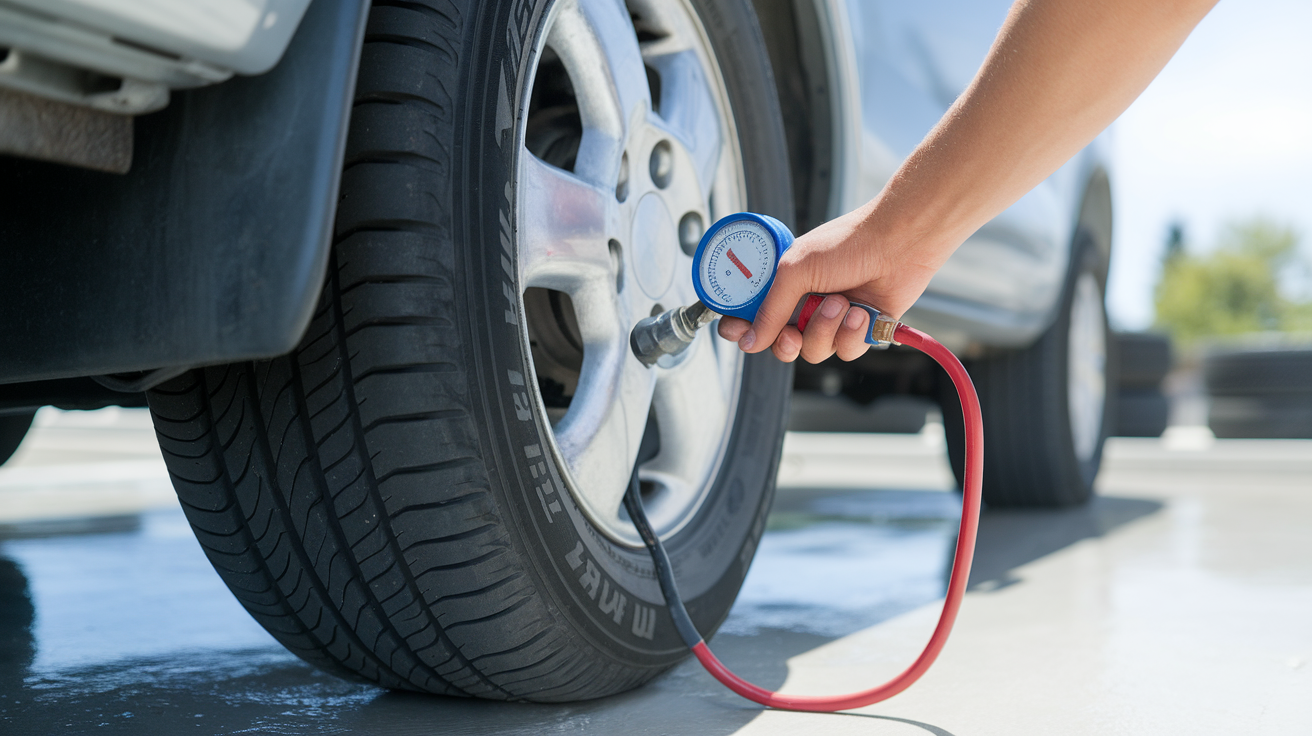
The first step is to check the tire pressure of all your tires, including the spare, if applicable. You can use a tire pressure gauge available at most auto parts stores or gas stations.
Compare the readings to the recommended pressure in your vehicle’s owner’s manual or on the door frame sticker.
If any tire is low, inflate it to the correct level. Always check when the tires are cold, as heat can cause higher readings. If the pressure is correct but the light remains on, proceed to the next steps.
Step 2: Inspect the Sensors
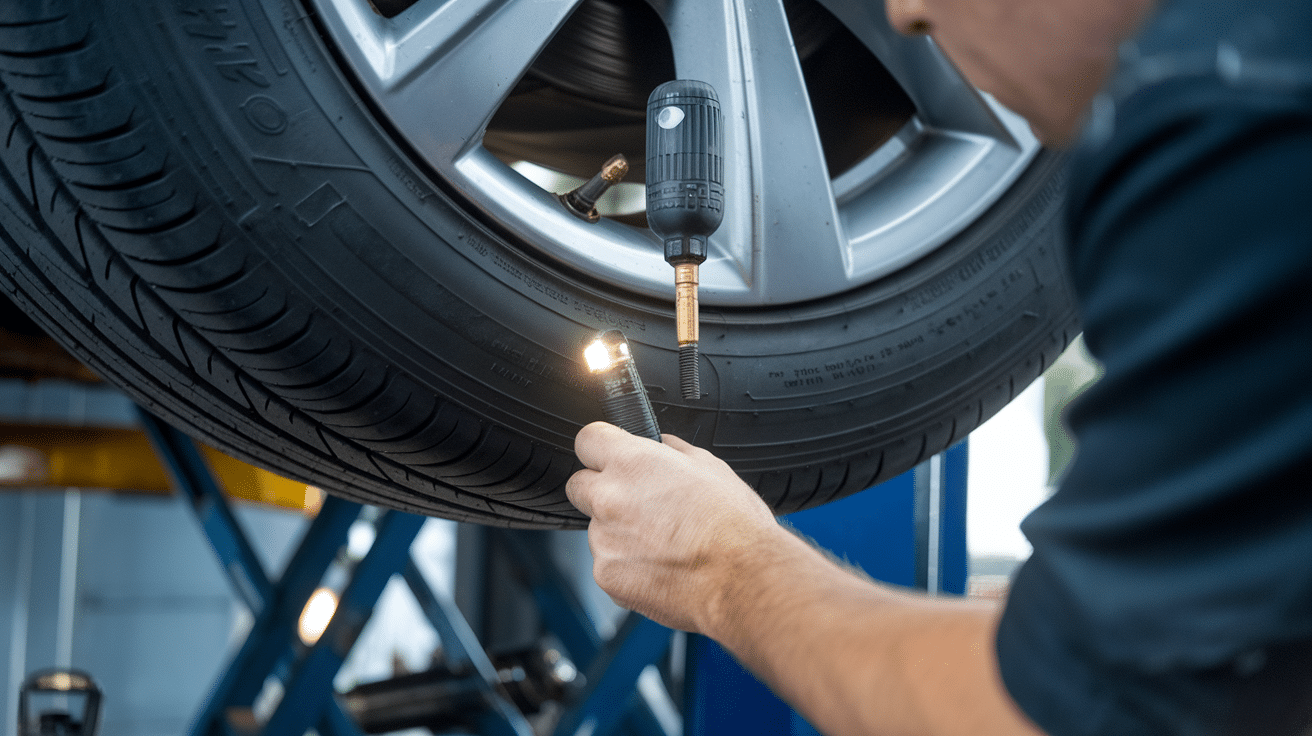
If the tire pressure is fine and the STMS light stays on, there may be an issue with the tire pressure sensors.
These sensors are located inside the tires and can sometimes malfunction or become damaged. Check for any visible damage to the sensor or the valve stem where the sensor is located.
If the sensor is damaged or malfunctioning, it must be replaced. You may need to visit a mechanic or tire shop for a professional inspection and repair.
Step 3: Resetting the System
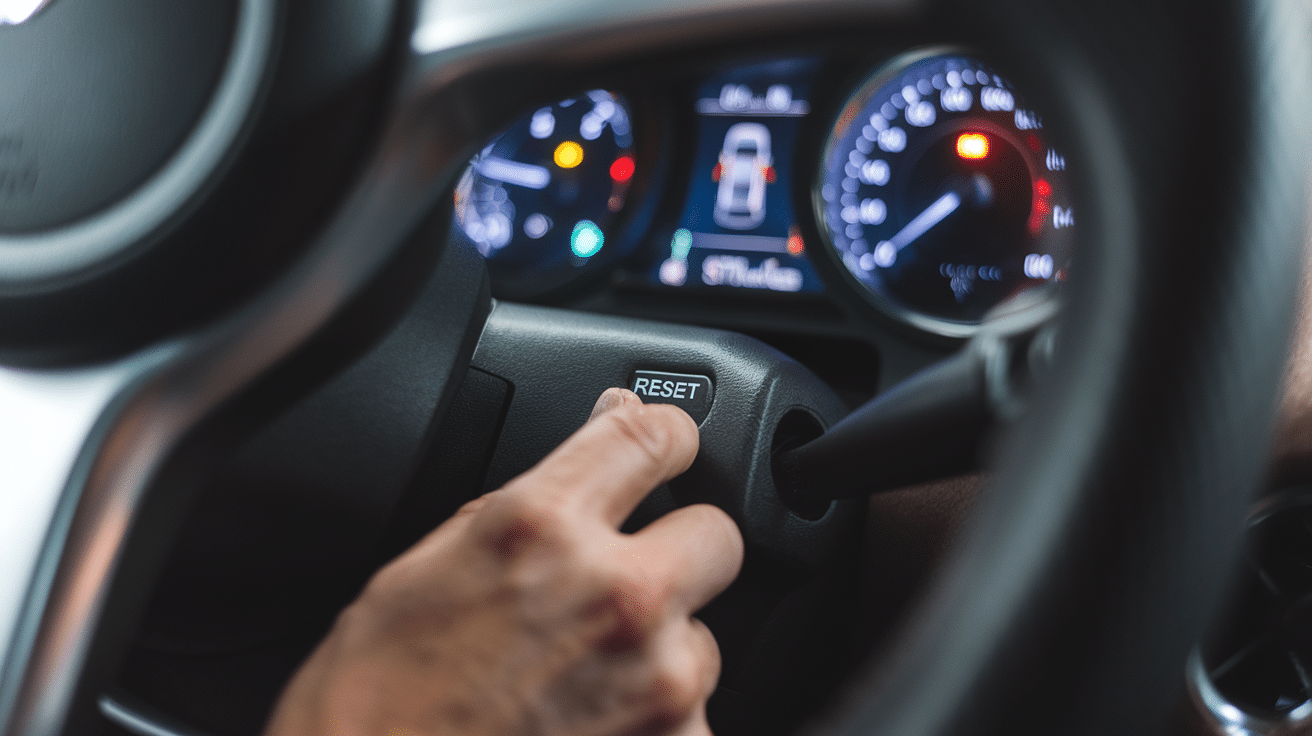
In some cases, the STMS light stays on even after the tire pressure is adjusted correctly. This could be due to a need for a reset after filling the tires. Many vehicles have a manual reset procedure for the tire monitoring system.
Typically, you will need to turn the ignition on without starting the car, press and hold the reset button (often located under the steering wheel or near the dashboard), and hold it until the light blinks and then goes off.
If this doesn’t work, refer to your vehicle’s manual or consult a professional for assistance.
Common Misunderstandings About the Service Tire Monitor System
The Service Tire Monitor System (STMS) light can often cause confusion or concern for drivers. While it’s essential for vehicle safety, some common misunderstandings exist regarding what triggers the warning light and how it should be interpreted.
False Alarms
One of the most common misunderstandings is that the STMS light always signals a tire pressure issue. However, external factors, like temperature changes, can affect tire pressure and lead to false alarms.
For example, during colder weather, the air in the tires contracts, causing a drop in pressure and triggering the light. It’s crucial to check the tire pressure manually in these situations to rule out false alarms.
Not Just for Low Tire Pressure
Many drivers assume that the STMS light only comes on for low tire pressure, but the system can also detect issues with the tire pressure sensors.
If the sensors malfunction or fail, the light may turn on, even if the tire pressure is correct. This can happen if the sensor is damaged or if the battery inside the sensor is dead.
Understanding that the system monitors more than just pressure can help avoid confusion when the light comes on.
Misinterpretation of the Light
The STMS light can often cause unnecessary panic, especially when it turns on unexpectedly. While low tire pressure is the most common reason for the light to turn on, it is important not to jump to conclusions.
Properly interpreting the warning light and knowing when to check the tire pressure or sensors can save you time and prevent undue stress.
Always remember to check the tire pressure first and only seek professional help if the issue persists after addressing the most common causes.
How to Reset the Service Tire Monitor System Light
If the Service Tire Monitor System (STMS) light stays on even when your tire pressure is fine, it may need to be reset. This can happen after you change a tire, rotate it, or if the sensors need to be recalibrated.
To reset the system, start by turning your ignition to the “On” position without starting the engine. Within five seconds, press the accelerator pedal three times.
Then, turn off the ignition. Afterward, start your engine and check the dashboard to see if the light has turned off. This reset helps the system recognize the new tire conditions and sensor signals.
If the light doesn’t go off after resetting, it may indicate a malfunctioning sensor or another problem. In this case, you should seek professional help from a mechanic or dealership to diagnose and fix the issue.
Preventing Future Service Tire Monitor System Light Issues
Regular tire pressure checks are essential to avoid the Service Tire Monitor System (STMS) light turning on frequently.
Make it a habit to inspect your tire pressure at least once a month or before long trips. Keeping the tires inflated to the recommended pressure ensures the STMS can accurately monitor their condition and helps avoid unnecessary warning lights.
Taking care of your tire sensors is also crucial for preventing issues. Over time, sensors may wear out or become damaged, especially if they’re exposed to extreme conditions. Regular tire maintenance, including sensor checks during tire rotations, will help keep the system working properly.
Finally, proper inflation practices can help prevent false alarms. Always use a reliable tire pressure gauge and be mindful of fluctuating temperatures.
Cold weather can cause tire pressure to drop, while hot weather can increase it. Adjusting tire pressure accordingly, especially during seasonal changes, ensures the system functions optimally.
Conclusion
In conclusion, maintaining proper tire pressure is key to keeping the Service Tire Monitor System (STMS) light off and ensuring your vehicle’s safety and performance.
Regularly checking your tire pressure, inspecting the system’s sensors, and addressing any issues promptly can prevent false alarms and costly repairs.
It’s important to understand that the STMS light doesn’t always mean you have a serious problem, but acting quickly if the light stays on is essential.
Following the steps outlined and keeping up with regular tire maintenance, you can avoid unnecessary stress and enjoy smoother, safer driving.
Consult a professional if the system doesn’t reset or if issues persist. This will help you maintain your vehicle in top condition, ensuring safety and efficiency.
Frequently Asked Questions
What Does the Service Tire Monitor System Light Mean?
The light usually indicates low tire pressure, but it could also signal other issues like sensor malfunctions, worn-out tires, or faulty components. It’s important to check tire pressure and inspect the system for problems.
How Often Should I Check My Tire Pressure?
Tire pressure should be checked at least once a month and before long trips. Proper tire inflation is crucial for vehicle safety, fuel efficiency, and the correct functioning of the Service Tire Monitor System.
Can Temperature Changes Cause the Service Tire Monitor System Light to Turn On?
Yes, temperature fluctuations can cause tire pressure changes, often leading to the warning light. Cold weather typically lowers tire pressure, while hot weather can cause it to rise, both triggering the light.
Why Does My Service Tire Monitor System Light Stay On After Inflating the Tires?
If the light stays on after inflating the tires, it could indicate sensor malfunctions, system errors, or the need for a reset. Inspect the sensors or consult a professional to resolve the issue.
Should I Ignore the Service Tire Monitor System Light if I Don’t Notice Any Tire Issues?
Ignoring the warning light is not recommended, as it may point to hidden issues such as faulty sensors or irregular tire pressure. Address it promptly to avoid potential safety risks and performance problems.


